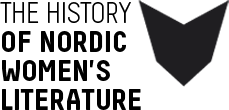There are many indications that women were largely responsible for the oral tradition in Norse literature, not least the eddic narrative poems which by and large thematise women’s experience and have a female perspective. The poetry was linked to the art of divination known as seid and to the healing arts, both of which were predominantly female spheres; that is to say, poetry, seid and healing arts were components of one and the same system, forming a ritual unit. In range, Norse literature spans the transition from paganism to Christianity and from an oral to a written culture. There is a concurrent movement from a strongly women-centric to a virtually one-sided male-dominated culture. With monotheism, and later Christianity, monasteries, writing, and schools, this women-centric culture was repressed and/or usurped by the male culture. The introduction of Christianity deprived women of many important roles in the execution of pagan rituals, and they did not learn to write, either. This meant that the women’s oral tradition was, in a very literal sense, silenced by the pens of the male culture.
Articles
In Denmark and Sweden in the seventeenth and eighteenth centuries, women sometimes recorded hymns and sacred songs, either from collector’s zeal or for use in private worship, and on occasion perhaps purely as material for a translation or writing exercise. Towards the turn of the seventeenth century, an increasing number of women, primarily in Denmark, not only made copies of other people’s hymns but also wrote their own. There is a marked difference between women’s hymn writing in Denmark and in Sweden. In Denmark we can find the names of writers with an extensive output, women who published a number of collections in their own name. These women found themselves in the contemporary spotlight, the subjects of tribute poems and requests for reprinting of their song collections. In Sweden, on the other hand, women primarily wrote single hymns for Pietist and Herrnhuter communities. The hymns were included in hymn books published from around 1730 onwards.

